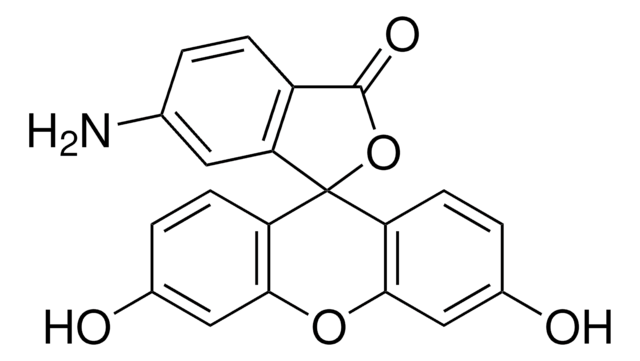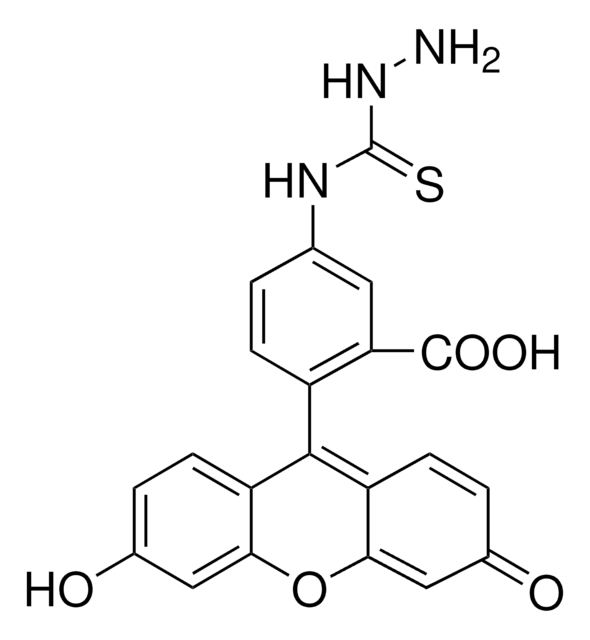Kluczowe dokumenty
07985
6-Aminofluorescein
BioReagent, suitable for fluorescence, ~95% (HPLC)
Synonim(y):
Fluoresceinamine isomer II
About This Item
Polecane produkty
linia produktu
BioReagent
Poziom jakości
Próba
~95% (HPLC)
Formularz
powder
zanieczyszczenia
≤5% 5-aminofluorescein
mp
285 °C (dec.) (lit.)
rozpuszczalność
DMSO: soluble
acetone: soluble
methanol: soluble
fluorescencja
λex 490 nm; λem 520 nm in 0.1 M Tris pH 9.0
przydatność
suitable for fluorescence
ciąg SMILES
Nc1ccc2C(=O)OC3(c4ccc(O)cc4Oc5cc(O)ccc35)c2c1
InChI
1S/C20H13NO5/c21-10-1-4-13-16(7-10)20(26-19(13)24)14-5-2-11(22)8-17(14)25-18-9-12(23)3-6-15(18)20/h1-9,22-23H,21H2
Klucz InChI
YOAWSYSKQHLFPM-UHFFFAOYSA-N
Szukasz podobnych produktów? Odwiedź Przewodnik dotyczący porównywania produktów
Zastosowanie
Inne uwagi
Nie możesz znaleźć właściwego produktu?
Wypróbuj nasz Narzędzie selektora produktów.
Kod klasy składowania
11 - Combustible Solids
Klasa zagrożenia wodnego (WGK)
WGK 3
Temperatura zapłonu (°F)
Not applicable
Temperatura zapłonu (°C)
Not applicable
Środki ochrony indywidualnej
dust mask type N95 (US), Eyeshields, Gloves
Wybierz jedną z najnowszych wersji:
Masz już ten produkt?
Dokumenty związane z niedawno zakupionymi produktami zostały zamieszczone w Bibliotece dokumentów.
Produkty
Nitric oxide (NO) as a signal transporter in neurons, endothelial cells and in the immune system.
Nasz zespół naukowców ma doświadczenie we wszystkich obszarach badań, w tym w naukach przyrodniczych, materiałoznawstwie, syntezie chemicznej, chromatografii, analityce i wielu innych dziedzinach.
Skontaktuj się z zespołem ds. pomocy technicznej




![5-([4,6-Dichlorotriazin-2-yl]amino)fluorescein hydrochloride ≥90% (HPLC)](/deepweb/assets/sigmaaldrich/product/structures/271/656/5f185b68-9254-440f-8211-1f4fbe1fee16/640/5f185b68-9254-440f-8211-1f4fbe1fee16.png)


